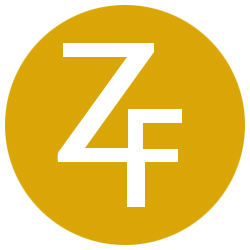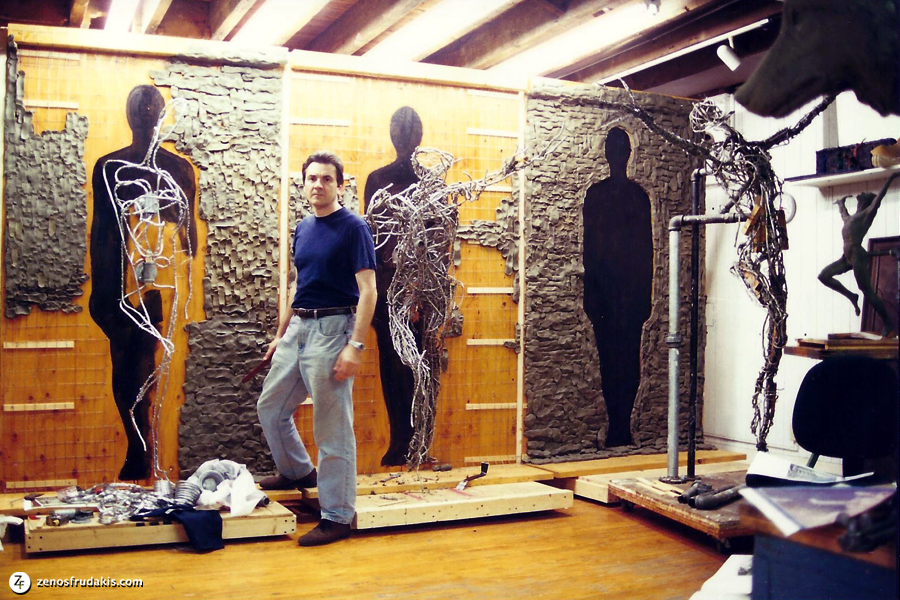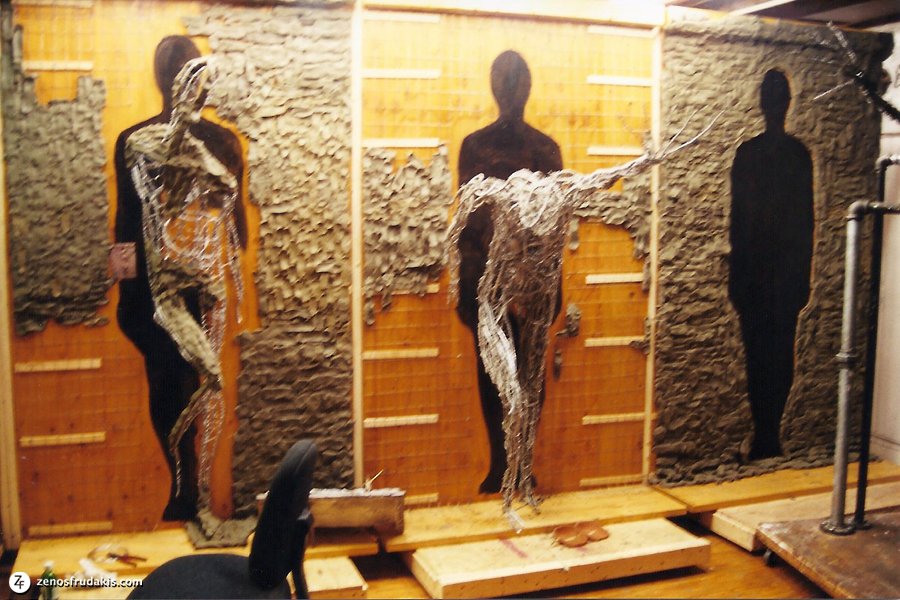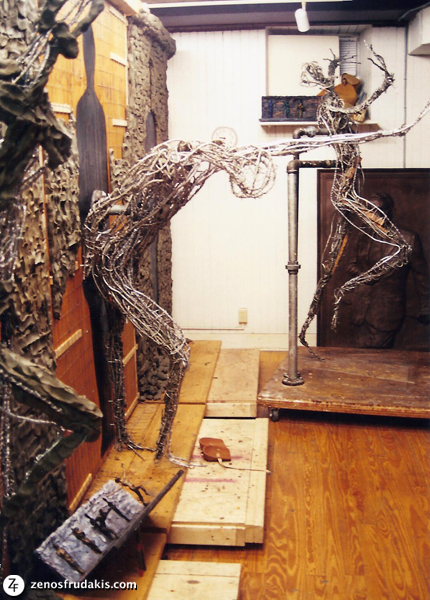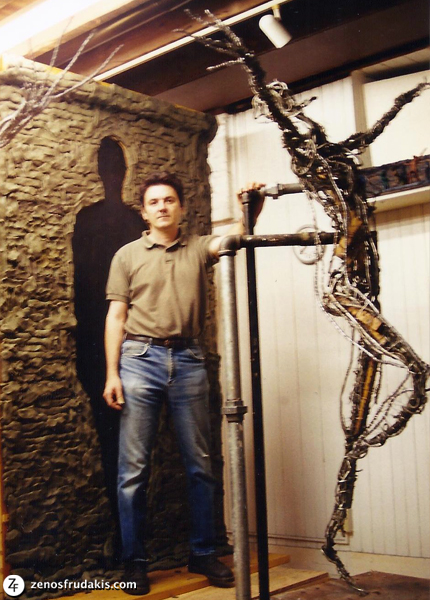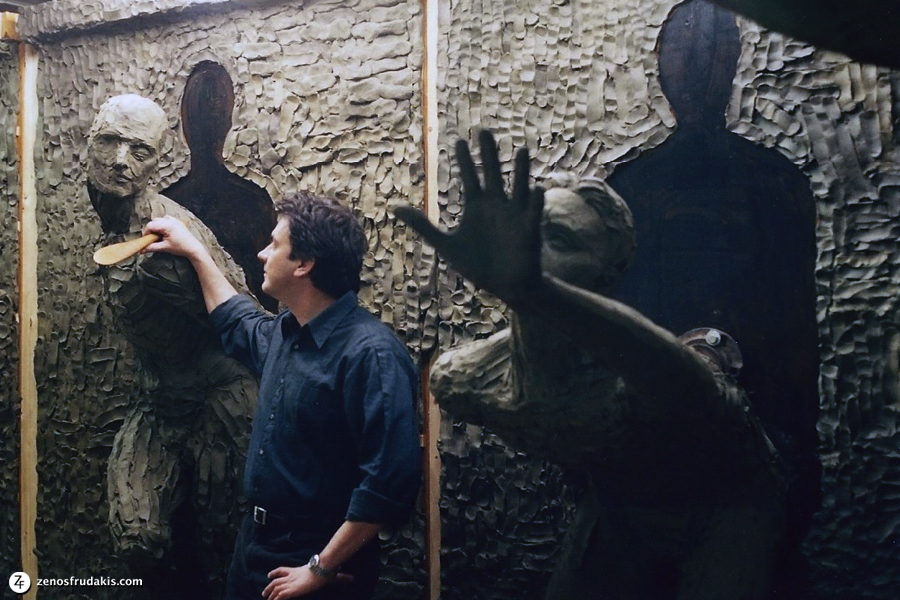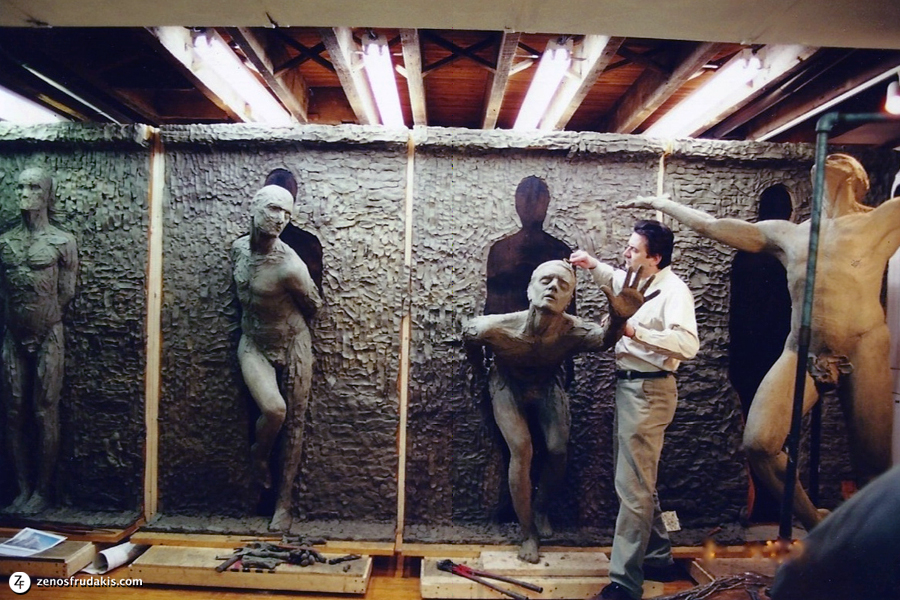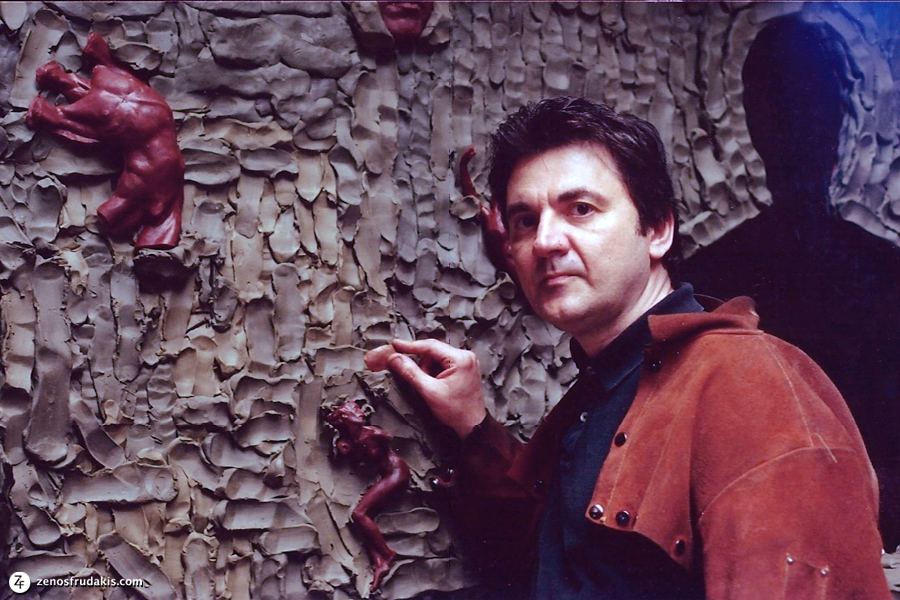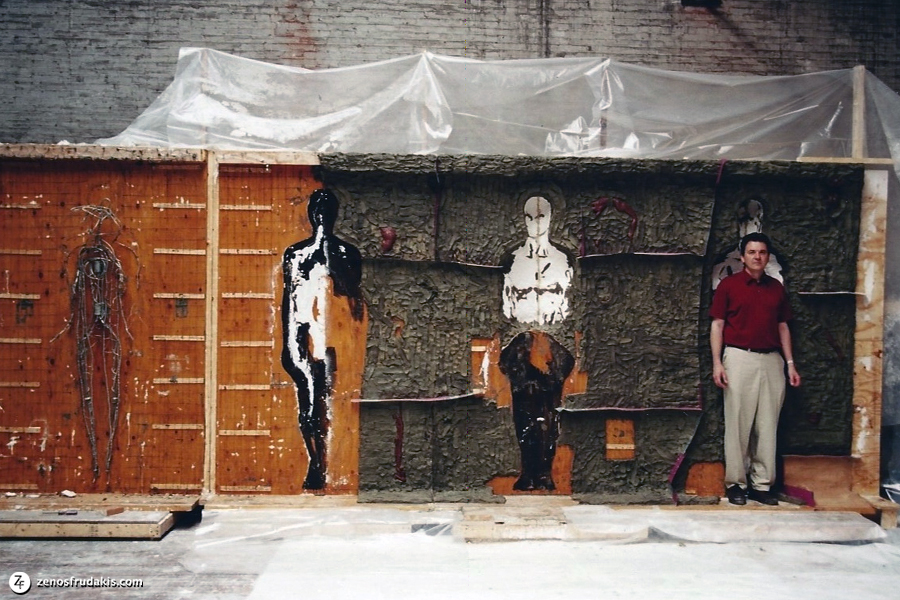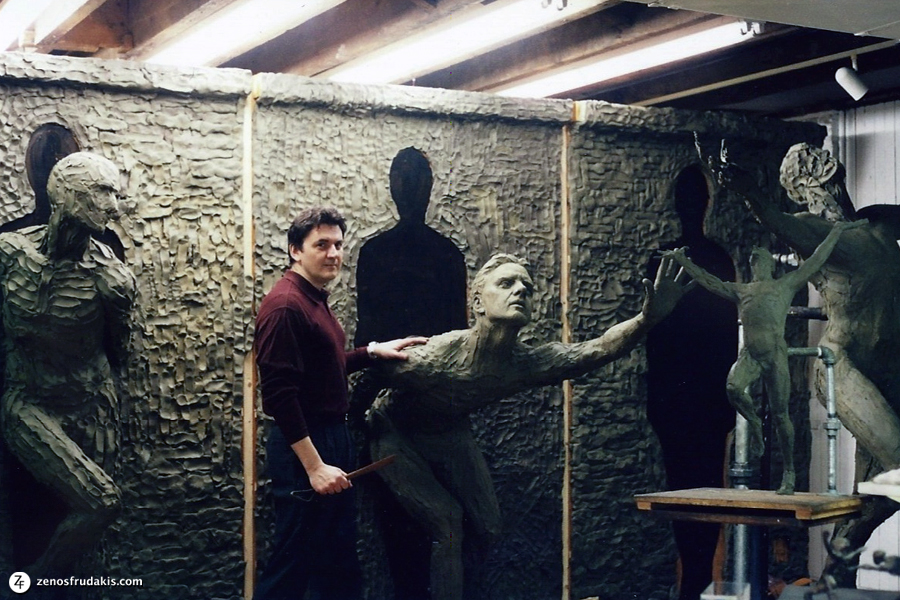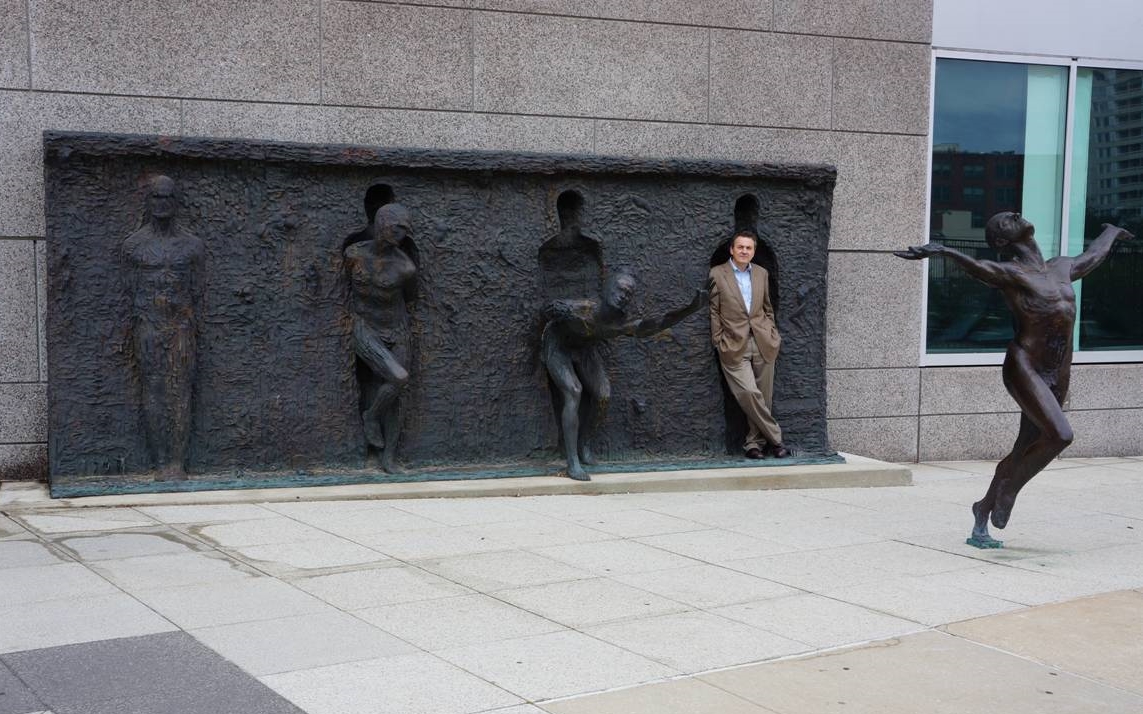
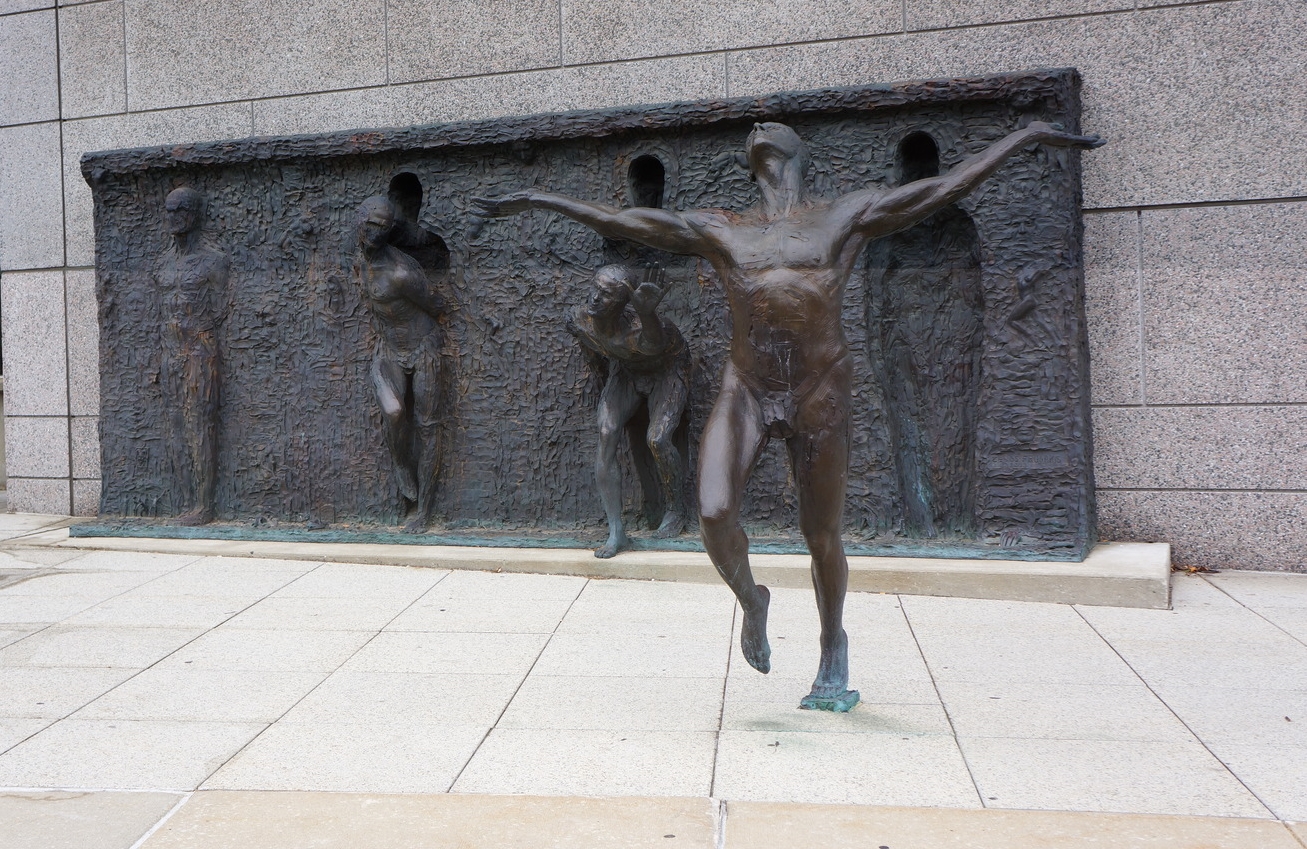
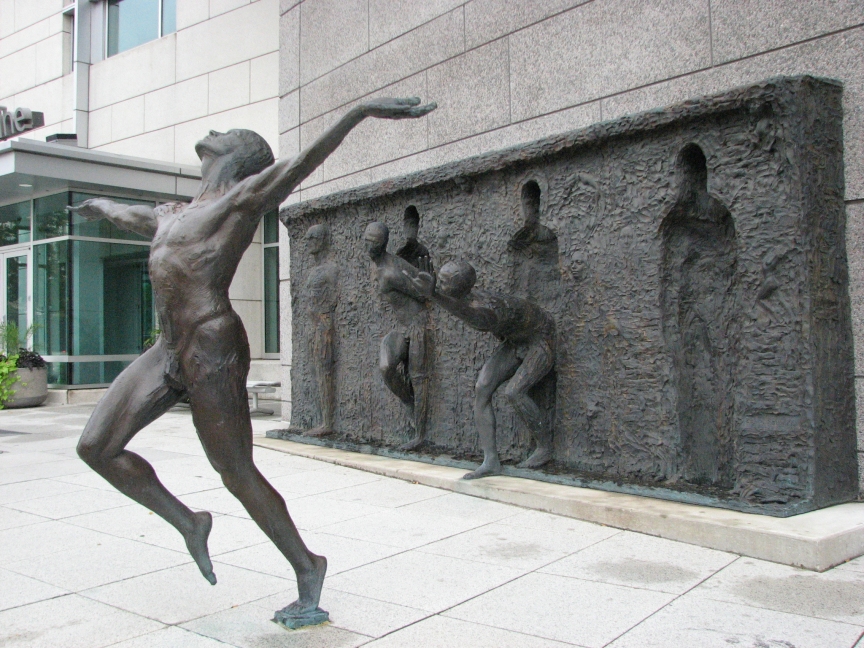
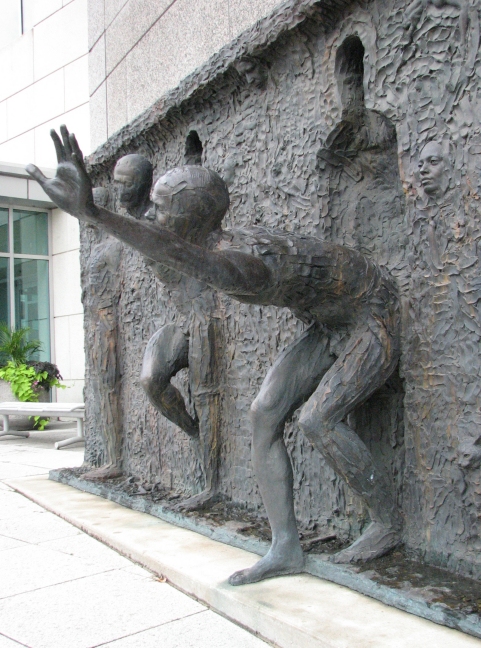
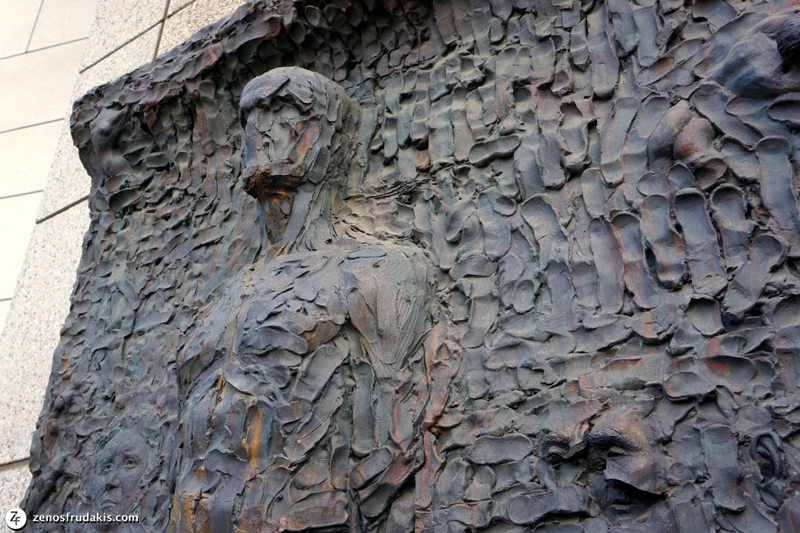
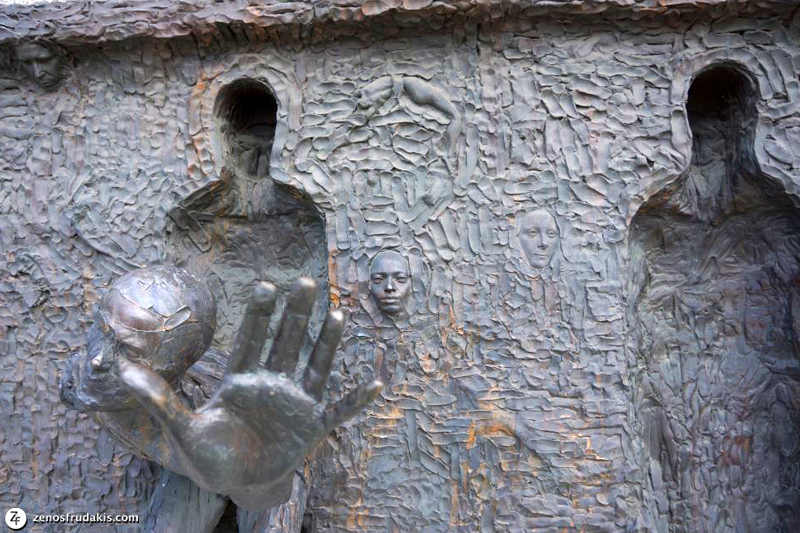
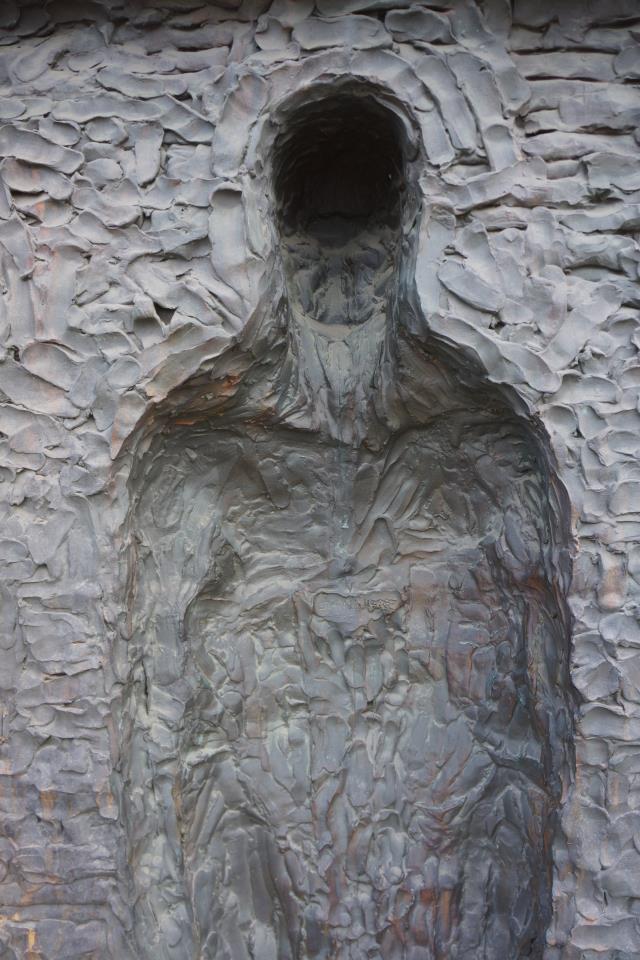
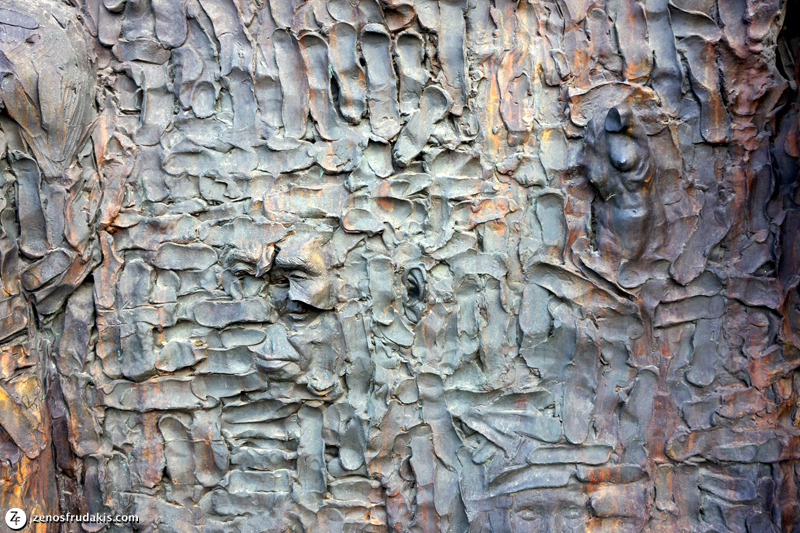
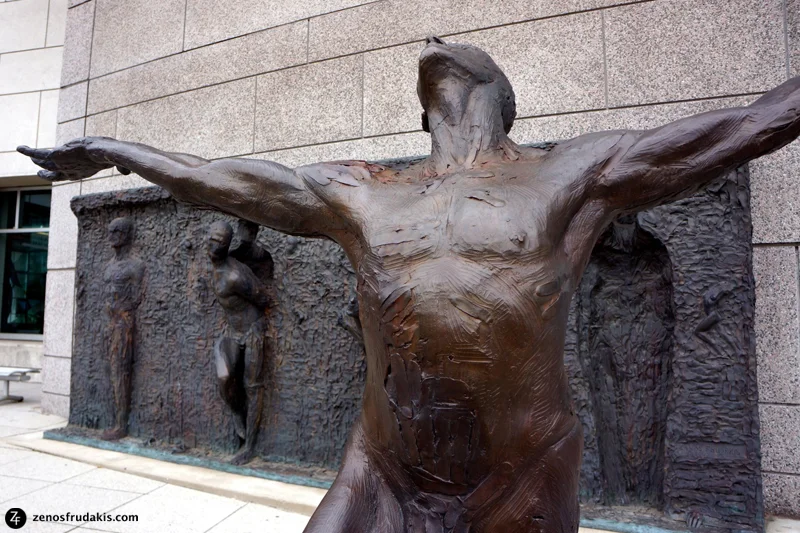
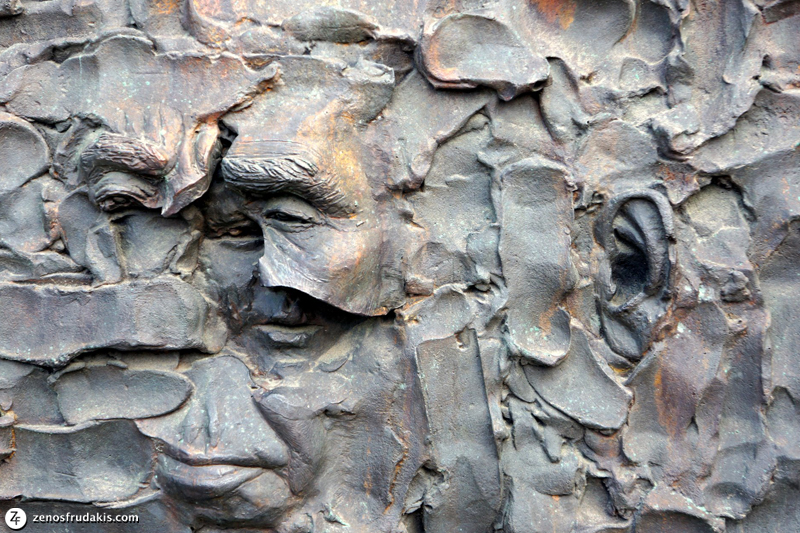
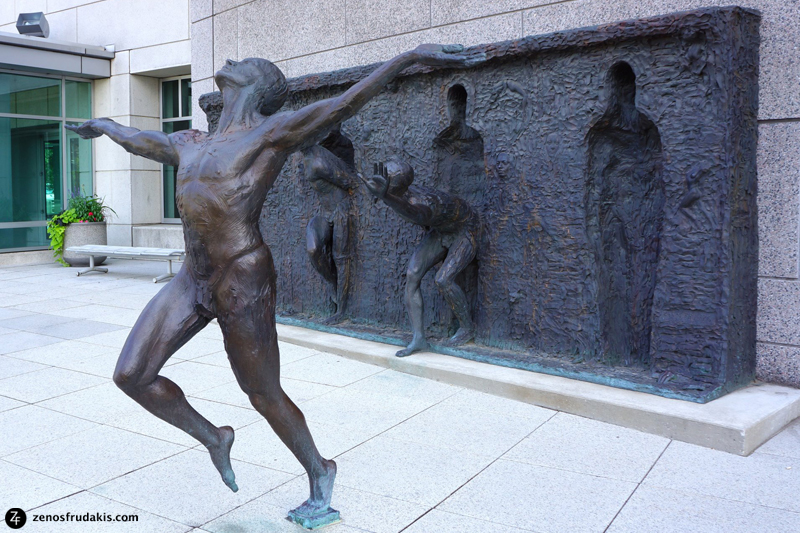
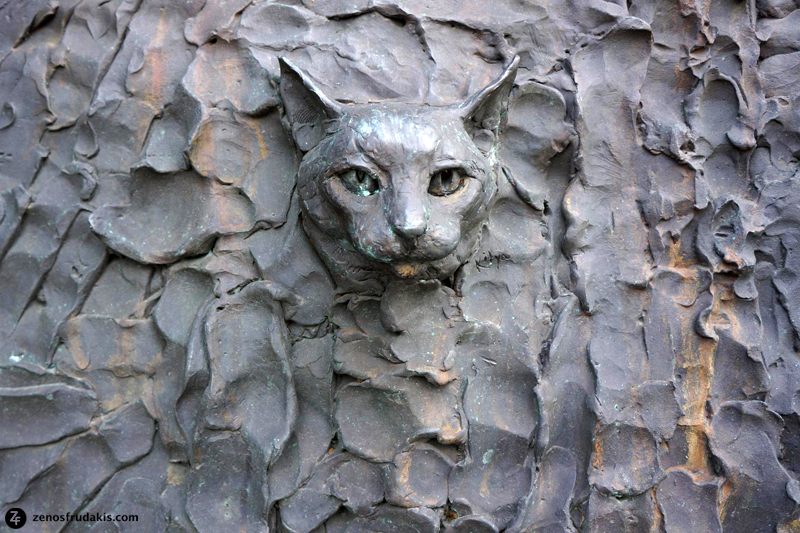
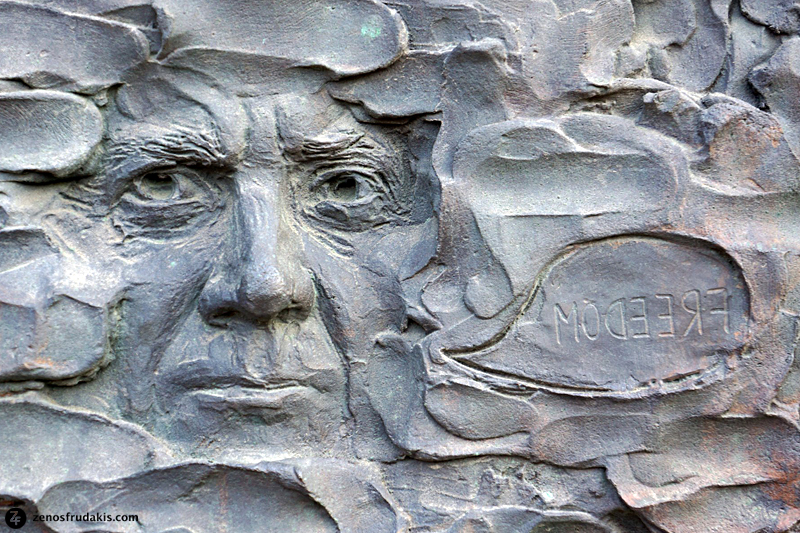
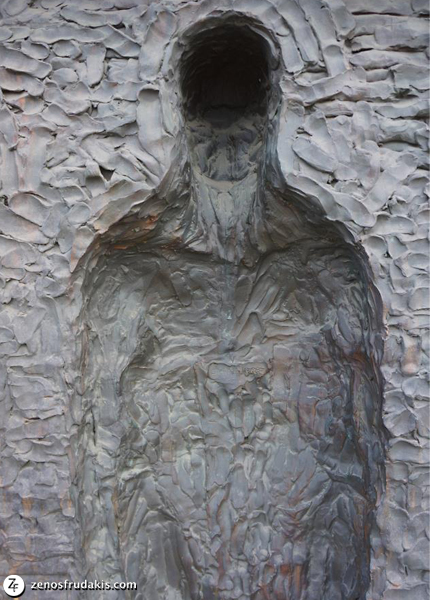
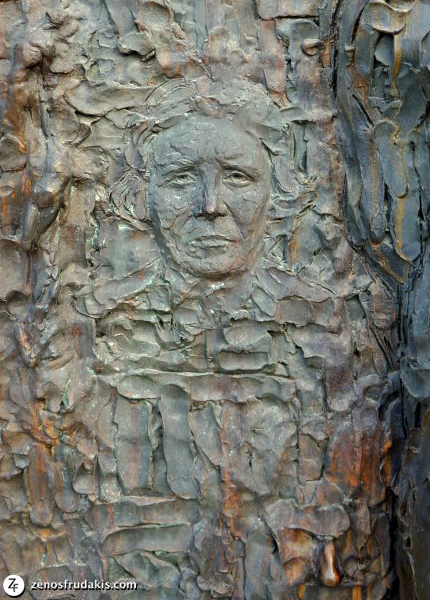
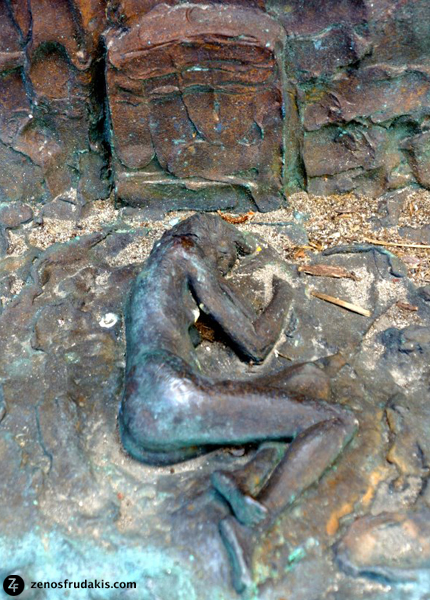
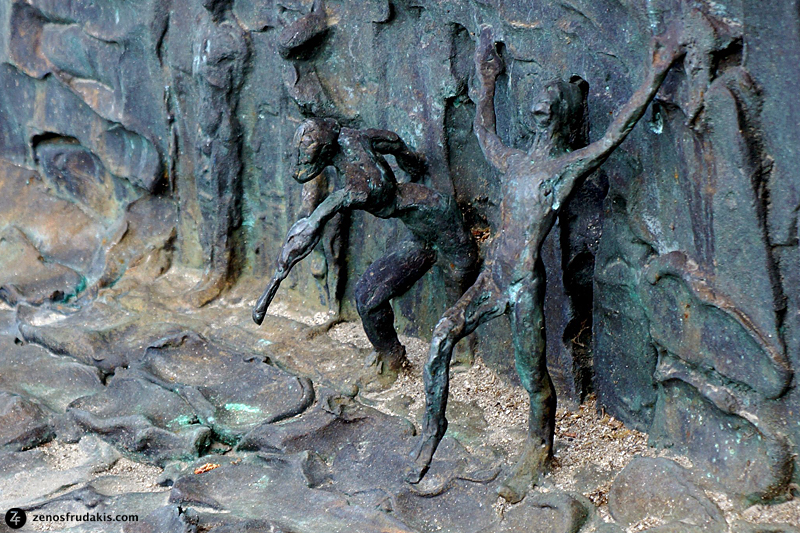
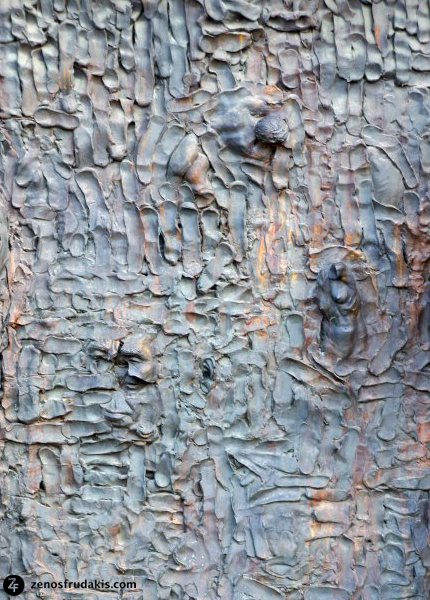
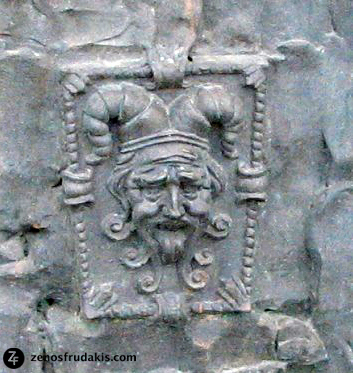
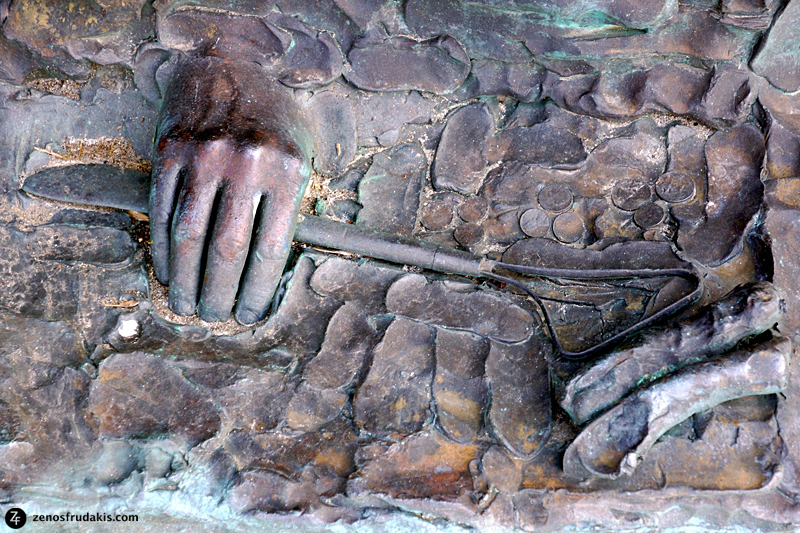
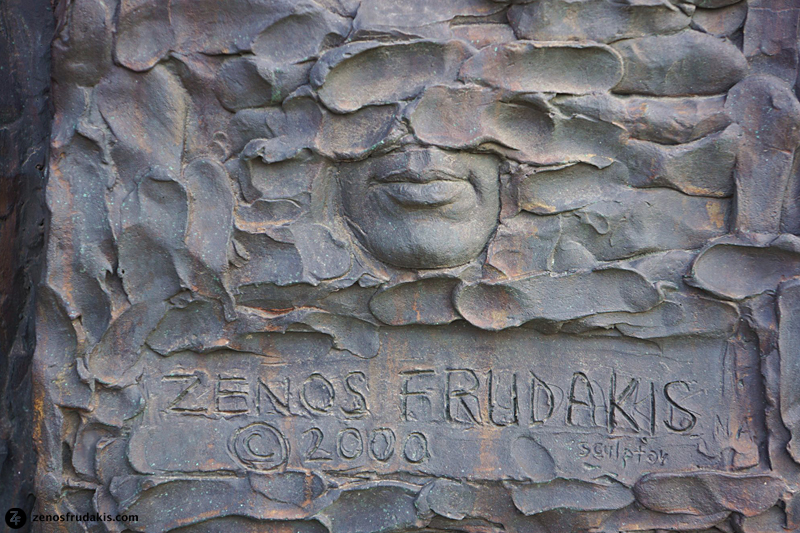
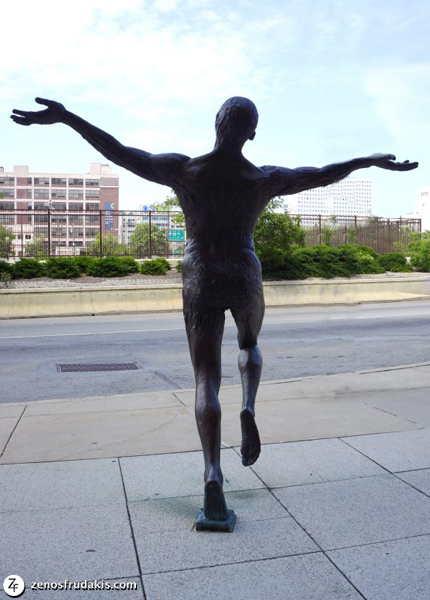
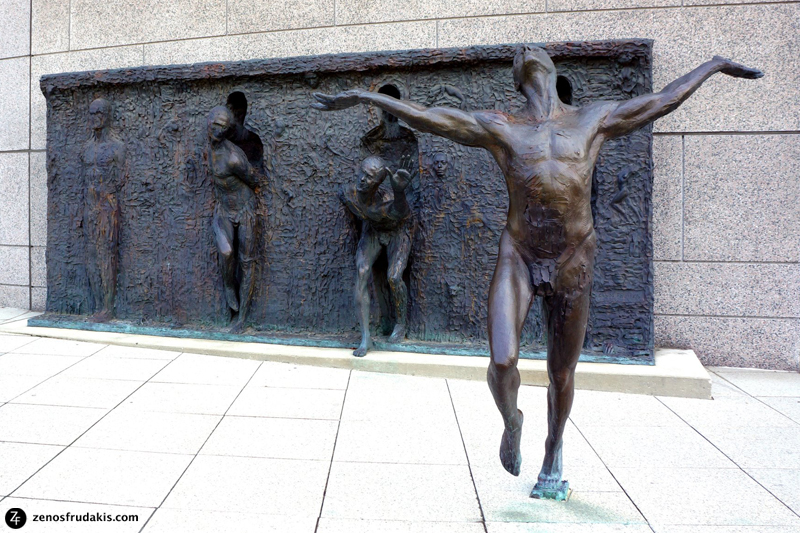
Freedom
“I wanted to create a sculpture almost anyone, regardless of their background, could look at and instantly recognize that it is about the idea of struggling to break free. This sculpture is about the struggle for achievement of freedom through the creative process”
Freedom Monument / Public Art
Size: 20 feet long x 8 feet high
Weight: 7,000 pounds
Media: Bronze
Sculptor: Zenos Frudakis
Completion of Sculpture: 2000 (date inscribed in sculpture)
Date of Dedication: June 18, 2001
Location: 16th and Vine Streets, Philadelphia, Pennsylvania
Freedom Sculpture—Meaning and Inspiration
Although, for me, this feeling arose from a deeply personal experience, I was aware that it reflected a universal desire shared by almost everyone: the need to break free from something—whether an internal struggle or an external obstacle—and to find freedom from it.
Freedom Sculpture—Composition
I began this work in a traditional sculptural manner, by creating a small clay model known as a maquette. The purpose of starting this way is to establish the overall action and major proportions of the figure within the composition, without being distracted by details. Another reason for working at such a small scale—just a few inches high—is that the internal armature supporting the clay is much easier to manipulate. This allows for greater flexibility in developing the concept. For instance, an arm, leg, or head can be repositioned freely without concern for damaging intricate features like a nose or a finger.
The maquette is the original mass of clay where the concept is born and begins to evolve. This early stage was essential when I later scaled the sculpture up from a few inches to 20 feet in length. Even in its monumental form, the piece retained the sense that all its conceptual elements—its forms, focus, and development—emerged from that initial, rough idea. The work underwent a metamorphosis, much like we do in life.
Although there are four distinct figures depicted, the sculpture represents a single figure moving from left to right. The composition unfolds sequentially: it begins with a mummy-like, captive figure, tightly bound to its background. In the second panel, the figure—reminiscent of Michelangelo’s Rebellious Slave—begins to stir and struggle for release. In the third panel, he has torn himself away from the wall that once held him captive and is stepping forward, reaching for freedom. In the final frame, the figure is entirely free—victorious, arms outstretched—completely removed from the wall and the grave-like space he has left behind. He evokes a powerful escape from mortality itself.
Freedom Sculpture—Artistic Themes
In working on the large-scale sculpture, I wanted to ensure that even those driving by and catching only a brief glimpse would immediately grasp the central message: that it was about escape. At the same time, I was mindful of those who worked in the building and would pass by the sculpture regularly—I wanted them to discover something more each time they looked. The wide spaces between the figures on the wall presented an opportunity to develop additional ideas.
It was important to me that the sculpture express more than a single theme. One of the key ideas integrated into the piece is that the process of creating the sculpture is openly revealed within the work itself. In the lower left-hand corner, the original maquette is cast into the sculpture. In the lower right corner, there is a cast of the sculptor’s hand holding a sculpting tool, along with two rolls of clay—also cast in bronze.
Throughout the background of the wall, I rolled out clay and pressed it with my fingers, leaving my fingerprints visible across the surface. I made no attempt to conceal how the piece was made. In fact, the concept of the maquette is expanded so that all the background figures resemble a giant maquette. At the same time, as the composition progresses from left to right, I’ve illustrated how a sculptural figure is developed—from rough form to a more finished representation.
Freedom Sculpture—Elements and Influences
In addition to the tools cast into the sculpture, there are other references to the sculptor's craft. Calipers appear not only for their practical use in measuring, but also as a symbolic nod to Protagoras’ famous words: “Man is the measure of all things.”
Also cast into the sculpture is an anatomical figure, traditionally used by sculptors as a reference. Many of the heads and figures embedded in the wall—some in the round and others in relief—are shown in partially sculpted form, revealing the process of creation as it unfolds.
Another layer of the work is that it functions as a kind of one-man show. I’ve long admired Rodin’s Gates of Hell, and in a similar spirit, I decided to incorporate many individual sculptures into the wall wherever it made conceptual and visual sense.
Like T.S. Eliot and many other artists, I have included deeply personal elements in this piece. My friend Philip, a fellow sculptor who died of AIDS, created a work that I included in Freedom—he often spoke of his wish to see it in a public space, though he did not live to make that happen. My cat, who lived with me for 20 years, as well as my mother, father, and a self-portrait, are all present in the work.
The self-portrait is easily identifiable: a speech balloon emerges from my mouth containing the word “freedom,” written backward—making it clear that the face was sculpted while looking in a mirror. I view the entire wall sculpture as a kind of illusion, much like Alice Through the Looking-Glass—a surreal, reflective world where reality and imagination blend.
Freedom Sculpture—The Wall
The sculpture includes an original Duane Hanson—a bronze cast of my own hands that Duane created and gifted to me. Much of what I aimed to do with this piece involved taking traditional sculptural forms and combining them in non-traditional ways, resulting in a distinctly postmodern sensibility.
For instance, I dropped a wax cast of my father's bust from a height of two or three feet, shattering it into large pieces. I then cast those fragments into the wall in a fractured arrangement over another face—an older work I discovered in a vat of clay purchased from the estate of a sculptor who had passed away long ago.
I've also embedded hidden details in the background for viewers to discover upon repeated visits. Among them is a small arrangement of cast coins—a nickel and two pennies, another nickel and two pennies, and two quarters with a penny. These coins not only suggest the relationship between money and art but also form a subtle reference to my birth date: 7-7-51.
Freedom Sculpture—Your Story
It is important to me that the public engages with the sculpture—not just intellectually and emotionally, but physically as well. I’ve created a designated space marked with the words “stand here,” inviting people to place themselves within the sculpture and become part of the composition.
Ultimately, this sculpture is a statement about the artist’s attempt to free himself from the constraints of mortality through a long lasting creative form.
Videos on YouTube
In the Media
COMMENTS ON FREEDOM SCULPTURE
Philadelphia, Pennsylvania
Below are just a few of the hundreds of emails and online comments we've received about the Freedom Sculpture—reflecting the diversity of voices and locations they come from. Every message has been read, and each one is respected and valued. Together, these comments reveal both the universal themes embodied by the sculpture and the unique life experiences of those who engage with it. Your messages continue to give shape, meaning, and new dimensions to the Freedom sculpture.
“As a chaplain on an inpatient psychiatry unit, I often use a picture of ‘Freedom’ with my patients during our spirituality groups. We talk about the importance of art and how we are able to connect with it. Frudakis’ ‘Freedom’ is always popular among patients, as it gives them an image and language to describe the feeling of being trapped...and the hope to one day be freed from (those feelings). I am so grateful for this sculpture, as it calls us to hope for something more and to express or hope to overcome our struggles.”
“I just recently saw a small picture of Zenos Frudakis sculpture ‘Freedom’, in Philadelphia. For both me and my wife this represents our life, and our struggle to ‘free’ ourselves from troubled childhoods and a troubled past. Ever since I saw the picture I have been trying to find a high quality image of the sculpture, because I want to print and frame it—as a constant reminder of why the struggle is worth it.”
“You work ‘Freedom’ instantly made me cry! I love it and recognize it so well. The different stages are so appropriate for the human condition as we each evolve and free ourselves at different times. I just had to have it so I ordered a poster not being able to commission a work myself! GOD BLESS you and your wonderful hands.”
“In Philadelphia everything breathes free. Not only is the Liberty Bell here. In 2000 sculptor Zenos Frudakis glorified freedom by showing bronze people trying to tear themselves away from the wall of a building. In fact, the urban sculpture depicts one man who step-by-step is separating himself from a gray mass of faces, arms, and legs. Chekhov squeezed the slave out of himself drop by drop. Frudakis’ character tears himself piece by piece from a wall in which he is only a brick (or rather, another more amorphous building material). The composition develops from left to right, beginning with a mummy encased in the wall. In the work there are references to other works. This author recognized that the second left figure was created with the influence of Michelangelo’s ‘Rebellious Slave.’”
“I hope some day Kurdish government buy the ‘Freedom’ sculpture and place it in Kobani. This is what your art mean to us.”
“Until today, I had never encountered your work. I am in public education in the San Francisco Bay Area. I saw ‘Freedom’ via a Facebook post, and was simply enthralled...Simply put, it is all amazingly creative, awe-inspiring and breath taking. I work in a school that has students with great challenges from language learners to those who are in low-socio-econonmic situations. Freedom spoke to me about the vision they need to make a difference in their lives and their communities. Most of them have no vision of the future, themselves or their future. Last year, when I asked one student what they wanted to do with their future, their honest answer was, ‘be an average guy.’ I emailed a link to your ‘Freedom’ sculpture to my principal who is visiting her family in Pennsylvania this week. I hope she will be able to visit your sculpture.”
“I saw a photo of your ‘Freedom’ sculpture on Facebook and was instantly fascinated by the explanatory power of your work.”
“I just discovered your ‘Freedom’ sculpture (on the internet). And I am left speechless by its incredible power and uniqueness. I am in awe, that a human being managed to capture and express the Human Spirit and Struggle in such an intense, profound, dynamic, and tangible way—AND all this in a sculpture, which, by definition, is static. For me, this creation of yours touches the realm which resides beyond words or definitions, including calling it ‘art.’ Its primal quality puts it on the plane of genesis.”
“I just want to congratulate you about your work. When I saw ‘Freedom’ I stayed with my mouth open for almost an hour. I live in Athens and in this difficult for our country time I felt so proud for you. Thank you for reminding us with your art (all the Greeks around the world ) that we still have people to make us proud around the world.”
“Every semester, I take my English classes to see and write about your amazing sculpture...Seeing and writing about your sculpture is, without doubt, the best assignment of every semester. I never tire of watching students explore the wall for the first time, stand in the empty space, and measure themselves against the figure on the sidewalk. No doubt, you can tell, I think the sculpture is wonderful...an endless text to be read and reread.”
“I write to you to express how much I am impressed by the beauty of your works and sculpture, specially the ‘Freedom Sculpture,’ it’s really a master piece. Why don’t you visit Dubai and do special artwork.”
“I found this photo of your sculpture Freedom on internet. I work for World Wide Fund for Nature WWF struggling to find a suitable illustration for the cover to our report about entrepreneurship and sustainable development in Swedish education system. For me the sculpture expresses creativity needed for sustainable development and a living planet.”
“I still love this sculpture and have my own image of it up on my vision board for inspiration. The image is so powerful to me as it completely reflects the work I do to help people heal emotionally.”
“I just wanted to share something with you and with the Artist who created the ‘Freedom Sculpture.’ I’ve gone through some incredibly painful situations in my life in last two years: cancer, divorce, domestic violence, homelessness, relapsing, rejection and an attempt to take my own life. I’ve struggled for the past eight weeks like I’ve never done before (intense inner child therapy, 12-step meetings, prayers and a spirit that won’t stop moving forward). My whole world turned upside down, but I continued to show up at work and in life. I made a conscious and deliberate decision not to turn back—no matter what. My co-worker emailed me a picture of the sculpture today, saying that it reminded her of me, and just how far I’ve come in eight weeks. It touched me so profoundly that I cried my eyes out. I just wanted you to know that I was touched and am seriously moved by this piece of art because it is me (although I am female), and then I read what the Artist wrote in regards to the master piece that he created and knew what he was telling me…my story. Thank you for gifting me with this day…what a wondrous day it is.”
